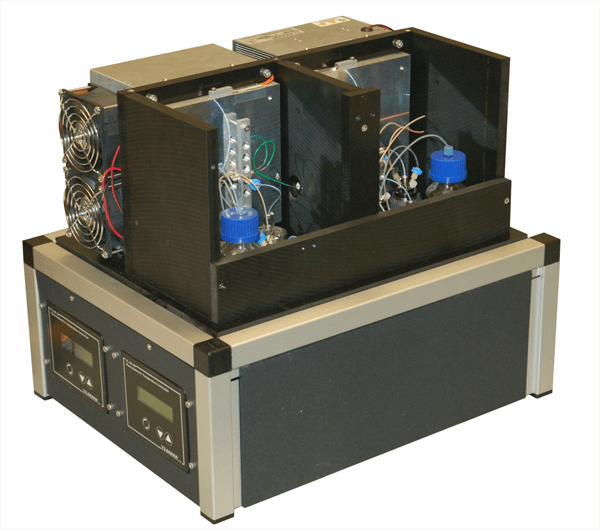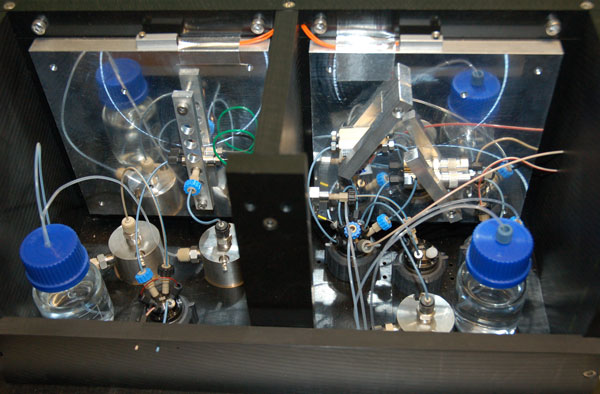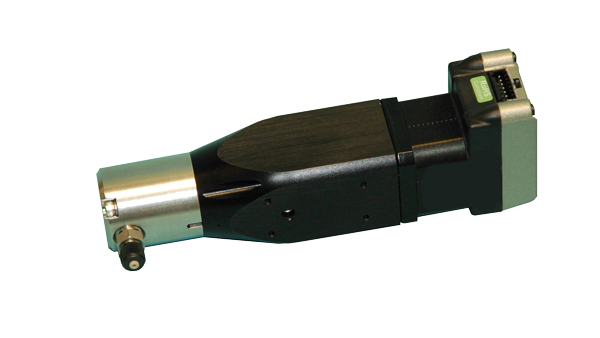TrueHED(c) - High Energy Dynode
What is the TrueHED system ?
The CSS Analytical Co Inc. High Energy Dynode (HED) is a sensitivity enhancement product, designed as an after market addition to existing Agilent 5972, HP 5972, and HP 5971 Mass Spectrometers. The CSS Analytical TrueHED© product consists of three components: the Electron Multiplier unit, the HI Volt Box and new Chemstation macros. The Hi Volt box is small and rests on the top of the instrument case. The Hi Volt box obtains its power from the MSD and communicates with the Chemstation via the “Accessory Control” bus. The electron multiplier unit is an assembly very similar to the unit that comes standard on the MSD, except re-designed to provide new features which are the heart of the HED system. The Chemstation macros are basically modifications to the Manual Tune Menu which allows for the HED to be turned on and off. The expected improvement in true signal intensity is from 3x, to as much as 30x or more depending on the m/z of the ion being detected, with the same, or better signal-to-noise ratio. This improvement occurs over the entire mass range but is most pronounced for high-mass ions. Thus, if you can see 20x more signal from the same concentration of compound, without a reduction in signal-to-noise ratio, it stands to reason that you can reduce the amount injected for a lower Limit of Detection (LOD).
Why make this investment ?
The CSS Company High Energy Dynode (HED) detector system improves the sensitivity of a quadrupole mass spectrometer by increasing the efficiency of ion detection. A few years ago, you wisely invested in your HP brand 5971 and 5972 GC/MS. It has given you many years of service with little trouble. Now, its getting older and you are faced with the same old decision: Buy a new model or stay with the one you have ? Now, you have another choice !
CSS Analytical Co. Inc. has been offering data system upgrades since 1990 and for the value, nothing or no one has offered anything better in all these years. With our Eighty-X© Mass Spec Upgrades you have been able to keep your MSD up to date with the most current Microsoft Operating System, and Chemstation available. You know how strong your MSD is. You know that your mass spec should be able to run for at least another 5 years. CSS Analytical wants to offer you yet another outstanding upgrade product to help this become a reality. Upgrade your HP 5971, Agilent 5972 or HP 5972 MSD with the CSS Analytical TrueHED© and realize sensitivity that you’ve never seen before !
Send us your working top board, manifold plate, source and electron multiplier. We'll use your parts, with just a few minor modifications. We'll mount our HED then tune it to your existing quads and source, burn it in and test, then send it back ready to drop in and run. For less than HALF the price that you might think !
Let us help you keep your 5971 and 5972 running another 5+ years.
Here's how it works:
The CSS Company High Energy Dynode (HED) detector system improves the sensitivity of a quadrupole mass spectrometer by increasing the efficiency of ion detection. The standard electron multiplier of the mass spectrometer has three main elements: an iris, a deflector, and an electron multiplier horn.
As with all detector systems the ion starts in the ion source and is "repelled" by the repeller into the quadrupole. The repeller voltage is small (5 to 20 volts) and is there to accelerate the ions into the quadrupole where they will be filtered. Since the voltage (and therefore effective force) of the repeller is constant for any given set of ions, the same momentum is imparted into all ions, regardless of size. Since momentum is equal to mass times velocity, the smaller masses will have a greater velocity and the heavier masses will have a slower velocity. This velocity of the ion then defines it's kinetic energy ( ½ mV*2). Ions with higher velocities will have much more kinetic energy than ions with slower velocity.
This detection scheme makes use of relatively low voltages applied to the iris lens and x-ray plate which forms a lensing system. This lens system focuses the ions into the electron multiplier horn with what ever energy they have when they arrive. Unfortunately as the mass of the ions increase they generate a much lower signal as they strike the electron multiplier horn. This is due to their lower kinetic energy.
In contrast, the CSS Company HED has a new electron multiplier detector, with improved ion optics (lens system) and high ion-collection efficiency. After all, once the ions are made in the source, we can't make any more on the way to the detector improvements must come by doing a better job of detecting the ions that are there. During positive ion mode, a very large negative electric potential is placed on the "High Energy Dynode" plate, typically 20x to 100x the magnitude of the potential on the original x-ray plate. This large voltage of opposite polarity will attract the positive ions toward the dynode plate with great force. This process accelerates the velocity of the ion and hence dramatically increases the kinetic energy. These highly accelerated ions will now collide with the dynode plate and generate a shower of "secondary" ions and electrons that will recoil and are focused into the electron multiplier and thus produce substantially more signal. Although some additional noise is also generated by this process, the true signal of the ion being detected increases even more rapidly resulting in higher signal to noise ratios.


